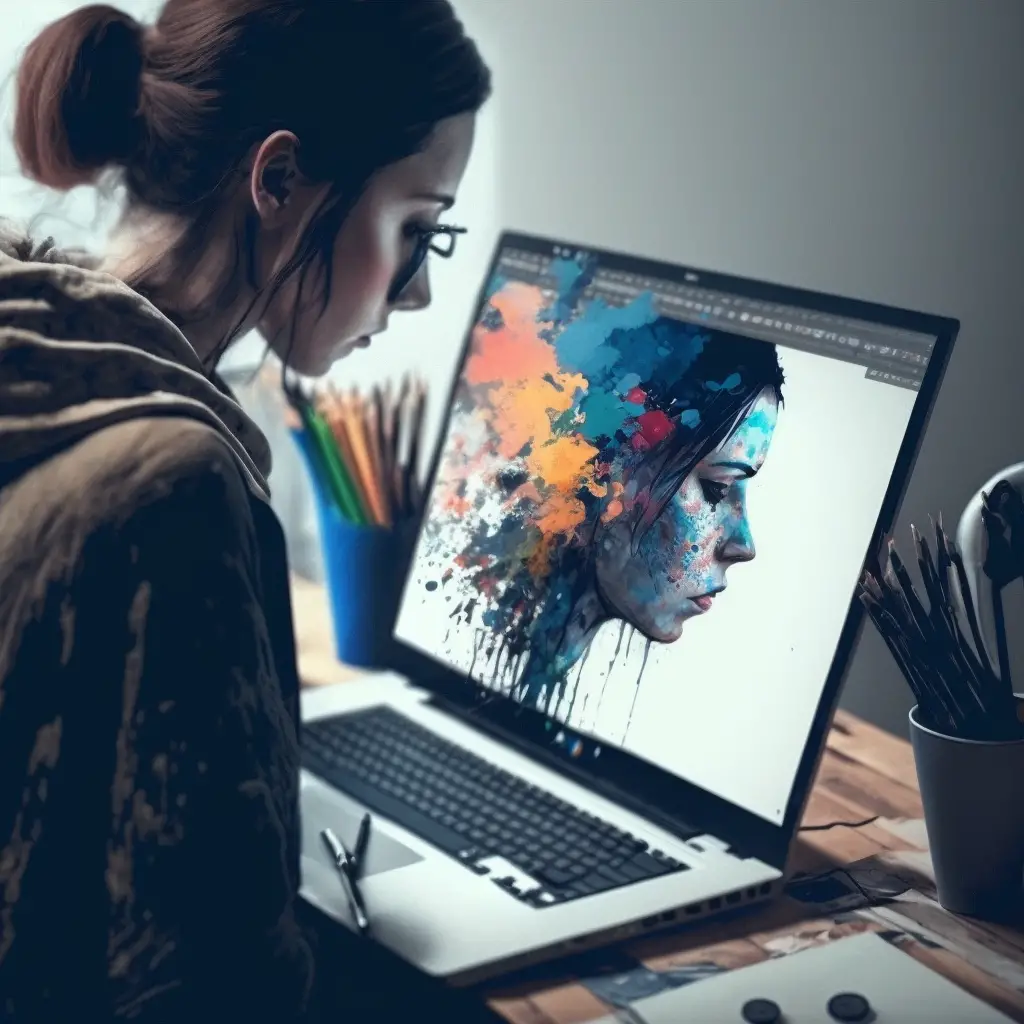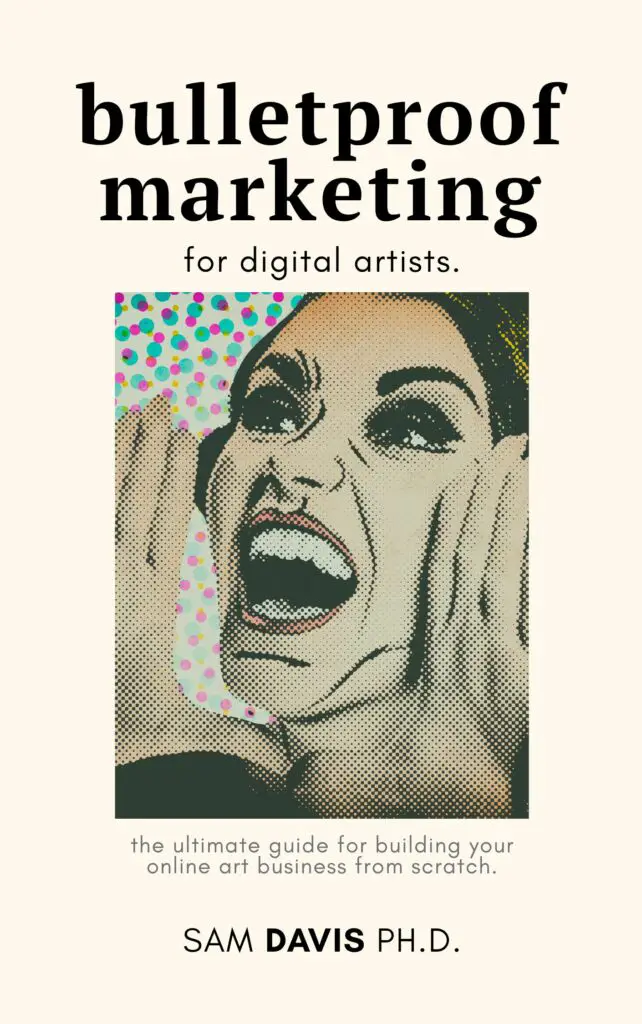If you're looking to create digital paintings that look like they were created with traditional media instead of digital painting techniques, Rebelle 6 is the perfect art software for you. In this blog post, we will discuss 10 tips that will help you master digital painting with Rebelle 4/5/6!
Digital art is such a cool field. Digital artists from all over the world are discovering the value of mixing up their traditional paintings with digital oil painting technique. Even if you're exclusively into traditional art, expanding your traditional technique into digital art oil painting is a great way to to learn an additional medium for your art career. In service of that, here are a few tips for learning how to join the ranks of digital painters. Let's get started!

Choose the right brush for the job – there are a variety of brushes available, each with its own purpose
Choosing the appropriate brush for the task at hand can make a big difference in the end result. Paintbrushes come in an array of sizes and shapes, from large to small, thin to wide. Soft-bristled brushes are well suited for applying a thin coat of varnish on furniture or trim which requires attention to detail, while stiff-bristled brushes are used for sturdier work such as painting walls and ceilings.
While this sounds like I'm talking about real, traditional painting – many of these characteristics apply to digital oil painting as well. For digital art tools, software designers have worked really hard to make the digital painting process mimic the traditional media. That means if you'd used textured brushes on your piece in a physical medium, you should do it on your graphics tablet, too.
The best way to get to know your digital painting brushes is to try out some brush strokes. Or, create your own custom brushes. Once you're more familiar with the basic brushes, you'll be able to create brush strokes on your graphics tablet that mimic your traditional medium with ease.
Experiment with different colors and tones to create depth and interest in your painting
Artists can use a number of strategies to create depth and interest in their paintings. Experimenting with color is one of the most effective, allowing one to play with different hues, tints, and tones. Cool colors like blues and greens recede in space while warm colors such as reds and oranges advance forward. Emphasize key elements by setting them apart with a different hue or tone; this also helps draw attention to the focal point of your painting.
If you're unsure which pallet would work best for your painting, try taking inspiration from nature – observing how colors interact together will give you ideas that you can apply to your painting. With creativity and experimentation, you are sure to create an intriguing piece!
One of my favorite features of Rebelle is that their art mixing mimics what traditional painters would encounter. If you mix red and yellow, you're going to get orange. While this seems straight forward, not every digital art mixing tool behaves in the way that you would expect. Adobe Photoshop and Corel Painter, for example, can produce some unexpected colors that deviate from a traditional painting experience.
Use layers to build up your painting gradually – this will help you make changes later on if necessary
When starting a painting, it is often beneficial to lay down base colors before then adding further layers as you go. Building up your painting gradually in this way allows you to make changes if needed or correct any mistakes you may have made earlier on.
It is a great technique to help you get the perfect look while avoiding extra hours spent repainting parts of your work. By taking the time to layer each section of your painting, you can be certain that you will be able to remove paint or add more if needed, making sure that all elements come together perfectly and the piece looks exactly how it should when it is completed.
While this makes sense in traditional art, it can feel a little disconcerting in digital art. Most of us will use layers for our whole painting to represent individual objects or sections of the painting, instead of “building it up” in the more traditional sense. Use your new layer options to paint directly over mistakes, separate out different brushes, or really organize your art in the easiest way for you.
Don't be afraid to add texture to your painting – Rebelle 6 makes it easy to create realistic textures
Adding textures to your paintings can quickly take them to the next level. Rebelle 6 takes out the guesswork when it comes to creating realistic textures in your art. Whether you want to paint a grassy meadow or replicate a rustic wood surface, Rebelle 6 has you covered with its selection of painting tools.
The brush and color blends allow for stunning detail-oriented strokes that create incredibly lifelike textures on the canvas. With these tools at your disposal, you no longer have to be scared of adding texture to any painting! You do have more fine control than with traditional media, but of course, mastering digital fine art does take practice. If you're having trouble, consider using a reference image from another digital artist to see what they do in the digital sphere that you can mimic.
Take advantage of the mirroring tool to create symmetry in your painting
When painting, a great way to produce symmetry and balance in your art is to use the mirroring tool. This easy-to-use tool utilizes two reference points to replicate your lines along a reflective edge, allowing you to paint both halves of your subject at the same time.
With the mirroring technique, it's quick and virtually effortless to add uniformed precision and detailed accuracy to both sides of your artwork. Whether you want create symmetry in an animal or ornate designs in a landscape scene, learning how to use the mirroring tool can not only make painting easier but also help improve the quality of your work.
Many other tools have mirror functions, but Rebelle's tool is easier, in my opinion than either Adobe Photoshop or Corel Painter.
Use the reference photo feature to help you plan out your composition
Creating the perfect composition can be difficult and intimidating, especially if you are just getting started in art. Thankfully with the reference images feature in most art programs, the process can be a lot easier. You can use this feature to open up multiple images at once, or even split them over your canvas so you get a better view of each image. Reference images allow you to see things from different angles and perspectives, making it easy for you to plan out your composition quickly and effectively. Best of all, tinkering with colors and angles is a matter of seconds due to its versatile format – so go ahead and start planning!
Even with the reference feature, I find that having two screens helps me more than having a reference blocking my view of my painting. Good painting is all about what works for you, so the best advice I can give is to just keep practicing and paying attention to the small details. Most artists master digital painting in just a few tries.
Final thoughts
As you can see, there are a lot of different techniques that you can use to create a beautiful painting in Rebelle 6. By following the tips we've outlined above, you'll be well on your way to creating stunning artwork that you'll be proud of. So what are you waiting for? Get started today and see what you can create!
Get access to Rebelle products right here – one time fee, no subscription!
Not sure? Check out the learning resources available on Skillshare for Rebelle 4!

